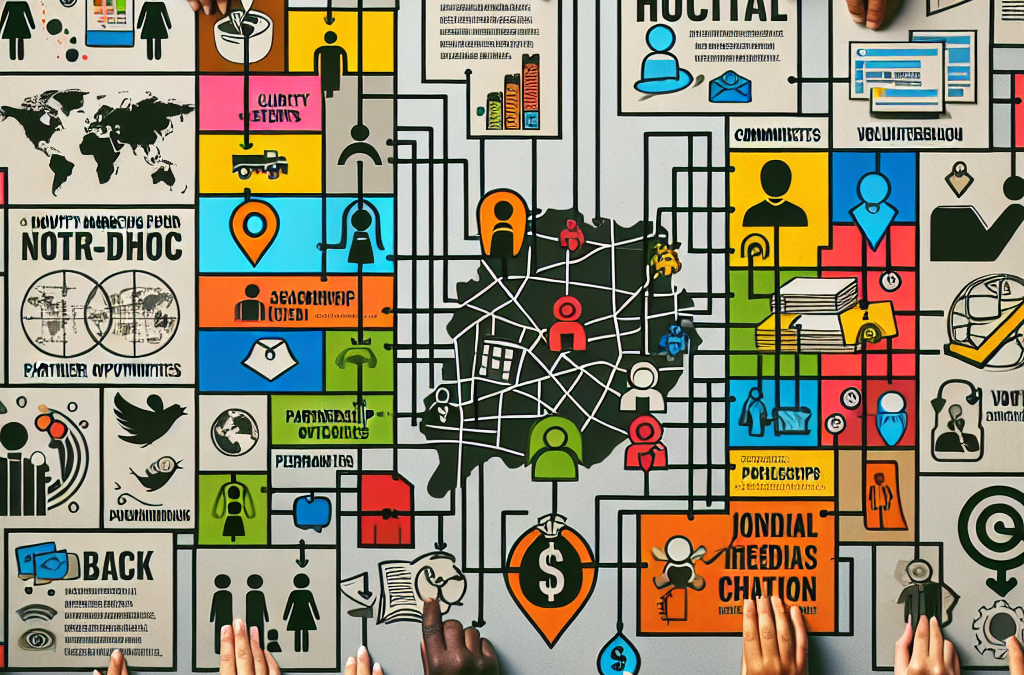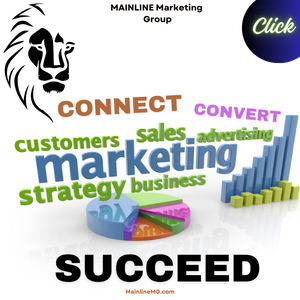Hey there! As I’ve journeyed through the world of marketing, I’ve learned a ton about how non-profits can really make a splash in their communities. Local marketing might seem a bit daunting, but trust me—you can turn your mission into a local movement! I’d love to share some strategies that have worked wonders for the organizations I’ve been involved with.
Building Strong Community Relationships
Networking with Local Businesses
One of the first things I learned is that building rapport with local businesses can be a game changer. When you reach out and cultivate relationships, you’re not just seeking donations or support; you’re creating partnerships that can mutually benefit everyone involved. Imagine hosting joint events or having local businesses sponsor a part of your initiative. It’s all about collaboration!
To kick off these relationships, I suggest starting with a simple coffee chat. Invite business owners over for a casual meetup where you can discuss your missions. You’d be surprised at how many are eager to help when they understand your cause and see your passion.
Remember, it’s not just about what they can do for you, but what you can do for them too. Engage them in your activities; invite them to your events. This two-way street can lead to powerful support networks.
Engaging with Local Residents
Next, don’t underestimate the power of engaging directly with your community! Attend town hall meetings, community fairs, or even local sports events. Being visible physically shows that you care, and it fosters connection. When locals see you participating in community life, it humanizes your organization.
I’ve found that offering free workshops or sessions helps establish credibility while allowing us to share our vision. This way, residents are not just passive observers but active participants in our mission—and that’s of great importance.
Moreover, create social media groups or forums where local voices can be heard. It’s a great way to engage even further and keep the conversation flowing within your community.
Utilizing Local Media
And let’s not forget about good old-fashioned local media! Building relationships with local journalists, writers, and bloggers can lead to some fantastic exposure for your non-profit. They often seek meaningful stories that resonate with the community.
Get to know them, share your mission, and pitch stories that highlight the impact of your work. A well-timed press release about an upcoming event or success story can really grab their attention!
Also, think of hosting media events where these local influencers can see your organization in action. This adds a human touch to your mission and encourages them to share your stories far and wide.
Leveraging Social Media Platforms
Choosing the Right Platforms
Let’s talk social media—it’s a vast ocean, but finding the right platforms for your non-profit is crucial. I’ve tried my hand at a few, and trust me, knowing where your audience hangs can make all the difference. Do they prefer Instagram’s visual storytelling or Facebook’s more in-depth discussions?
Start by defining your target audience. Once you know who you want to reach, you can tailor your content and select the platforms that align best with your mission and goals. Attention to detail goes a long way!
Keep it real—posting just for the sake of posting doesn’t cut it. It’s more about quality over quantity. Share compelling stories, behind-the-scenes looks, and genuine moments that resonate with your audience.
Creating Shareable Content
Now, let’s talk about the heart of engagement—content. When creating posts, think about what will encourage shares and interactions. Trust me, a compelling video or eye-catching graphic can boost your visibility like nothing else!
Also, don’t shy away from user-generated content. Engage your followers by asking them to share their stories related to your mission. This not only showcases your impact but also makes them feel involved.
Oh, and don’t forget to include hashtags! They help broaden your reach and connect you with a larger audience who shares similar interests.
Running Targeted Ads
If you’ve got a bit of a budget, running targeted ads can really make a difference. Facebook and Instagram ads allow you to reach specific demographics that align with your mission. It’s all about smart targeting—getting your message in front of the right eyes.
Experiment with different types of ads, whether it’s a fundraising drive or community event promotion. Monitor what works and tweak your approach as needed. I’ve learned that flexibility is key in the ever-changing world of social media.
Don’t just treat it as advertising; think of it as storytelling. Share your mission within these ads in a way that connects emotionally with viewers. When people feel a connection, they’re much more likely to engage.
Organizing Community Events
Planning Engaging Events
Nothing beats the magic of in-person interaction, right? Engaging events can stir excitement and foster community spirit! Think about what types of events resonate with your mission and community. I’ve led everything from fun runs to art fairs, and each has had its own charm.
When planning, start with a clear goal in mind—what do you want to achieve with this event? Be it awareness, fundraising, or community networking, let that guiding principle steer your decisions.
Collaboration can help your events shine, too. Partnering with local businesses not only brings in additional resources but expands your reach and credibility. It’s a win-win!
Promoting Your Events
Once you have an event planned, it’s time to draw eyes on it! Utilize your social media channels, and don’t forget about flyers, local bulletin boards, and even community radio stations. The more buzz you can create, the better!
Engagement is key—ask your network to share the event or help in spreading the word. Consider using an event platform to manage RSVPs and reach out directly to participants as the day approaches.
It’s also super helpful to create an exciting narrative about what people can expect. Give them reasons to join in and emphasize the impact they’ll create by attending!
Following Up After Events
Now, the event might be over, but the connection doesn’t end there! Following up with attendees is crucial—it shows that you care about their experience and value their support. A simple thank-you email or an invitation to join your mailing list can go a long way.
Gather feedback while it’s still fresh! Knowing what worked and what didn’t allows for continuous improvement. I often create short surveys to hear back from participants on their experience.
Not to mention—share the results! Highlighting the successes and impact from the event can motivate others to join in future initiatives. Celebrate those wins openly!
Utilizing Email Marketing Effectively
Building Your Email List
Email marketing remains one of the most effective tools for non-profits. Building a solid email list is your first step here. Start collecting emails at events, on your website, and through social media engagement. Offering something valuable in return, like a free resource or exclusive updates, can help get people on board.
As your list grows, segment your audience to send tailored messages. Different groups are interested in different things—cater your content accordingly to maintain engagement!
Before jumping into the deep end, always ensure that you have people’s permission to add them to your list. This builds trust and keeps your communications welcome.
Crafting Compelling Newsletters
The beauty of a well-crafted newsletter is that it tells a story while keeping your community in the loop. Aim for a friendly tone—like having a conversation with a friend. Include updates on your initiatives, highlight volunteers, and share upcoming events.
Keeping the content dynamic is key. Mix up your formats: while text is important, don’t shy away from visuals! Images, infographics, and videos create a richer experience. The more engaging your newsletter, the more people will look forward to receiving it!
Also, I find it effective to create a call to action within the newsletter. Whether it’s donating, volunteering, or attending an event, let them know exactly how they can contribute or get involved.
Analyzing Campaign Performance
Finally, make sure you’re analyzing your campaigns! Track open rates, click-through rates, and conversion metrics. This data is your friend; it sheds light on what resonates with your audience—and what doesn’t.
Don’t feel disheartened if something flops. Instead, dig into what went wrong and adjust accordingly. This iterative process is how we all learn and grow in our marketing efforts.
Consider running A/B tests to see what types of subject lines or content formats get the best responses. The insights you gather can refine your strategies for the future!
FAQs
-
What is the importance of local marketing strategies for non-profits?
Local marketing strategies help non-profits create community engagement, build relationships, and increase visibility in their area, which leads to support for their causes.
-
How can I start building relationships with local businesses?
Begin by networking at local events, inviting them for casual meetings, and discussing ways you can collaborate. Shared interests go a long way toward building strong partnerships!
-
Which social media platform should I choose for my non-profit?
It depends on your audience! Take the time to understand where your supporters are most active and tailor your content for those platforms. Quality over quantity!
-
What types of events work best for non-profits?
Engaging community-focused events like fun runs, art fairs, or educational workshops tend to resonate well. The key is to align the event with your mission and make it appealing to potential attendees.
-
How can I boost my email marketing efforts?
Build a solid email list, craft engaging and friendly newsletters, and analyze your campaign performance to refine future communications. Keep it personal and actionable!


